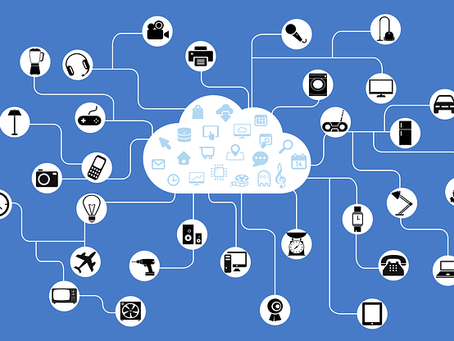All About IoT Security
Share

image courtesy pixabay.com
The Internet of Things (IoT) has rapidly transformed the way we live and work, connecting a vast array of devices to the internet, from smart thermostats and wearable fitness trackers to industrial sensors and autonomous vehicles. However, with the convenience and efficiency that IoT devices offer, significant challenges and security risks have emerged. In this comprehensive guide, we’ll explore the challenges and risks associated with IoT devices and examine strategies for securing these devices to protect our digital future.
Understanding IoT and Its Impact
What is the Internet of Things (IoT)?
IoT refers to the interconnected network of devices, objects, and systems that communicate and share data over the internet. These devices can be as simple as a smart refrigerator or as complex as a network of sensors in a smart city. IoT is transforming industries, enhancing convenience, and enabling data-driven decision-making.
The Proliferation of IoT Devices
The growth of IoT is staggering. For your knowledge estimates suggest that there will be over 75 billion IoT devices by 2025. This ubiquity brings immense benefits but also a host of challenges.
Challenges and Risks Associated with IoT Devices
1. Security Vulnerabilities
IoT devices are often developed with a focus on functionality and cost, leaving security as an afterthought. This makes them vulnerable to cyberattacks and data breaches.
2. Lack of Standardization
The IoT landscape lacks uniform security standards, making it difficult to ensure consistent security measures across devices.
3. Data Privacy Concerns
Note that IoT devices collect and transmit vast amounts of data. The potential for data privacy violations and unauthorized access is a significant concern.
4. Device Lifecycle Management
Managing the security of IoT devices over their entire lifecycle, including updates and end-of-life disposal, presents challenges.
5. Scalability
The vast number of IoT devices makes managing and securing them at scale a complex task.
6. Physical Access
Some IoT devices, such as industrial sensors, may be physically accessible to attackers, making them susceptible to tampering.
Strategies for Securing IoT Devices
1. Device Authentication and Authorization
Implement strong device authentication and authorization mechanisms to ensure that only authorized devices can connect to your network.
2. Encryption
Encrypt data both in transit and at rest. This step ensures that even if data is intercepted, it remains unreadable without the encryption keys.
3. Regular Software Updates
Keep IoT device firmware and software up to date to patch security vulnerabilities. Ensure that devices have an update mechanism.
4. Network Segmentation
Make it a priority to segment your network in order to isolate IoT devices from critical systems. This limits the impact of a security breach on the rest of your network.
5. Secure Boot and Firmware Verification
Use secure boot processes to ensure that only trusted firmware can run on IoT devices.
6. Intrusion Detection and Prevention
Implement intrusion detection systems (IDS) and intrusion prevention systems (IPS) to monitor and protect against abnormal device behavior.
7. Data Encryption Key Management
Implement robust key management for data encryption, ensuring that keys are securely stored and rotated as needed.
8. Privacy by Design
Incorporate privacy features into your IoT device development process, including data anonymization and user consent mechanisms.
9. Vendor Security Assessment
Evaluate the security practices of IoT device vendors. Choose reputable vendors who prioritize security.
10. Security Auditing and Penetration Testing
Regularly audit and test your IoT device security to identify vulnerabilities and weaknesses.
11. End-of-Life Planning
Plan for the secure disposal or decommissioning of IoT devices to prevent data exposure at the end of their lifecycle.
12. User Education
Educate users about the security risks and best practices for IoT devices. Encourage strong password practices and regular updates.
IoT Device-Specific Security Measures
1. Home IoT Devices
For home IoT devices, such as smart speakers and thermostats:
· Change default passwords immediately.
· Keep firmware updated.
· Secure your home Wi-Fi network.
2. Industrial IoT (IIoT) Devices
For IIoT devices used in industrial settings:
· Isolate IIoT networks from corporate networks.
· Regularly update and patch industrial control systems.
· Monitor for unusual device behavior.
3. Medical IoT Devices
For medical IoT devices, such as connected health monitors:
· Do ensure that they comply with medical device regulations.
· Encrypt patient data and transmissions.
· Implement user authentication for access to patient data.
The Role of Artificial Intelligence (AI) in IoT Security
Artificial Intelligence (AI) plays a pivotal role in enhancing IoT device security. By harnessing AI, organizations can:
· Anomaly Detection: AI-powered systems can analyze vast amounts of data from IoT devices to detect unusual patterns and anomalies in real-time. This can help identify potential security breaches or device malfunctions.
· Predictive Analysis: AI can predict potential security threats based on historical data, enabling organizations to take proactive measures.
· Behavioral Analysis: AI can monitor the behavior of IoT devices and their interactions with other devices and the network. Note that deviations from normal behavior can trigger alerts.
· Automated Response: AI can respond to security incidents rapidly, such as isolating compromised devices, initiating patches, or alerting security teams.
Emerging Technologies for IoT Security
To keep pace with evolving threats and the growing IoT landscape, several emerging technologies are being leveraged for enhanced security:
· Blockchain: Blockchain technology can be used to create tamper-proof, decentralized ledgers for IoT data, ensuring its integrity.
· Zero Trust Architecture: Zero Trust is an architectural approach that assumes no trust, even inside the network. It’s particularly relevant for securing IoT devices.
· Edge Computing: By processing data closer to IoT devices at the edge of the network, organizations can reduce the risk associated with transmitting sensitive data to the cloud.
· 5G Networks: The rollout of 5G networks promises increased bandwidth, lower latency, and enhanced security features, making them ideal for IoT applications.
· AI-Based Threat Intelligence: AI-driven threat intelligence platforms continuously monitor for emerging threats and vulnerabilities specific to IoT devices.
The Future of IoT Security
The future of IoT security will be marked by ongoing innovation and the integration of these emerging technologies. Some trends to watch for include:
· Quantum-Safe Encryption: As quantum computing advances, the need for quantum-safe encryption becomes critical to protect IoT devices from quantum-based attacks.
· Edge AI Security: The deployment of AI at the edge of the network will become more prevalent for real-time threat detection and response.
· Regulatory Frameworks: As IoT security becomes a global concern, regulatory frameworks will continue to evolve, imposing stricter standards on IoT device manufacturers and users.
· AI-Enhanced Cyber Insurance: Insurers will increasingly leverage AI to assess risk and set premiums for IoT devices, promoting better security practices.
· Supply Chain Security: The security of IoT devices from their initial production to end-of-life disposal will become a significant focus for manufacturers and regulators.
The Ongoing Quest for IoT Security
Securing IoT devices is an evolving challenge, but it’s a challenge that we must confront head-on to harness the full potential of this technology while protecting our data and privacy. As the IoT landscape continues to expand, our commitment to addressing security risks and embracing innovative technologies will be paramount.


